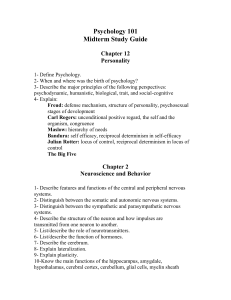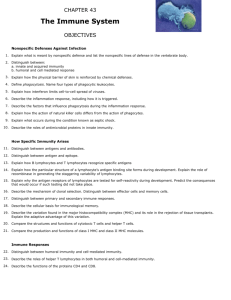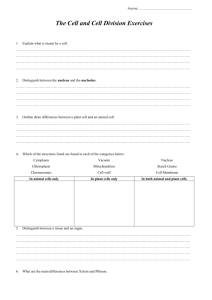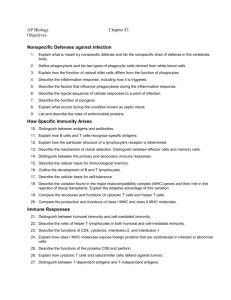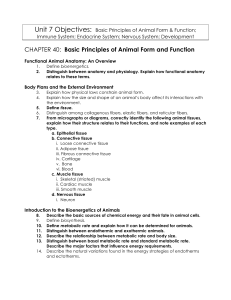AP Biology Test Review – Chapters 48, 49, 43 (to be administered
advertisement
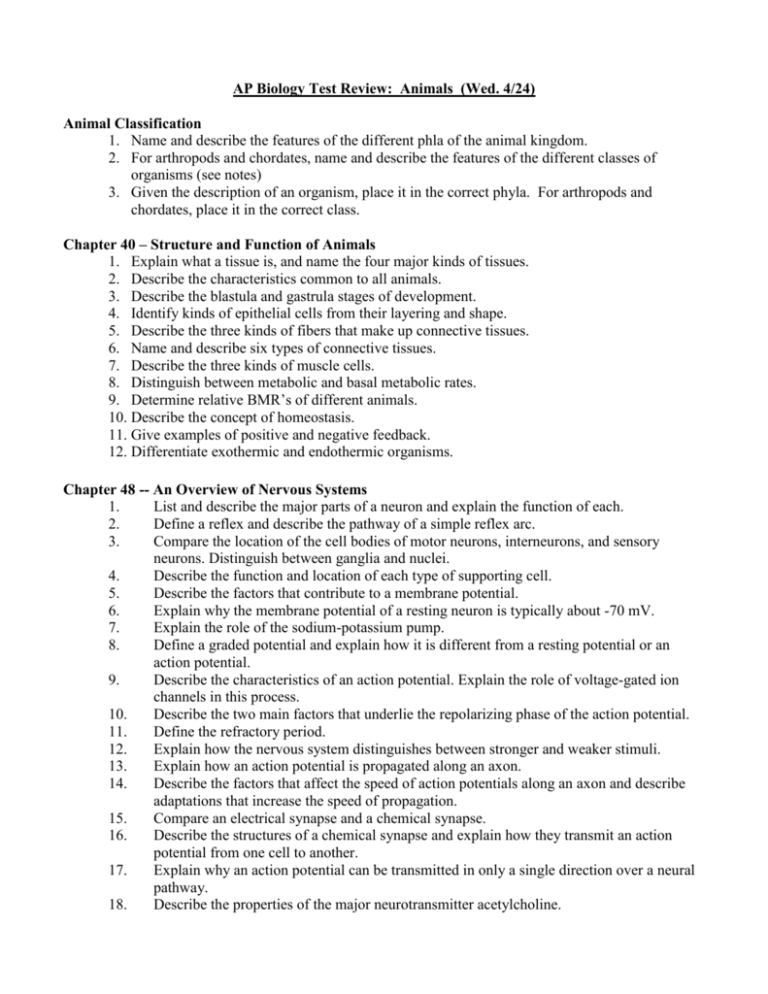
AP Biology Test Review: Animals (Wed. 4/24) Animal Classification 1. Name and describe the features of the different phla of the animal kingdom. 2. For arthropods and chordates, name and describe the features of the different classes of organisms (see notes) 3. Given the description of an organism, place it in the correct phyla. For arthropods and chordates, place it in the correct class. Chapter 40 – Structure and Function of Animals 1. Explain what a tissue is, and name the four major kinds of tissues. 2. Describe the characteristics common to all animals. 3. Describe the blastula and gastrula stages of development. 4. Identify kinds of epithelial cells from their layering and shape. 5. Describe the three kinds of fibers that make up connective tissues. 6. Name and describe six types of connective tissues. 7. Describe the three kinds of muscle cells. 8. Distinguish between metabolic and basal metabolic rates. 9. Determine relative BMR’s of different animals. 10. Describe the concept of homeostasis. 11. Give examples of positive and negative feedback. 12. Differentiate exothermic and endothermic organisms. Chapter 48 -- An Overview of Nervous Systems 1. List and describe the major parts of a neuron and explain the function of each. 2. Define a reflex and describe the pathway of a simple reflex arc. 3. Compare the location of the cell bodies of motor neurons, interneurons, and sensory neurons. Distinguish between ganglia and nuclei. 4. Describe the function and location of each type of supporting cell. 5. Describe the factors that contribute to a membrane potential. 6. Explain why the membrane potential of a resting neuron is typically about -70 mV. 7. Explain the role of the sodium-potassium pump. 8. Define a graded potential and explain how it is different from a resting potential or an action potential. 9. Describe the characteristics of an action potential. Explain the role of voltage-gated ion channels in this process. 10. Describe the two main factors that underlie the repolarizing phase of the action potential. 11. Define the refractory period. 12. Explain how the nervous system distinguishes between stronger and weaker stimuli. 13. Explain how an action potential is propagated along an axon. 14. Describe the factors that affect the speed of action potentials along an axon and describe adaptations that increase the speed of propagation. 15. Compare an electrical synapse and a chemical synapse. 16. Describe the structures of a chemical synapse and explain how they transmit an action potential from one cell to another. 17. Explain why an action potential can be transmitted in only a single direction over a neural pathway. 18. Describe the properties of the major neurotransmitter acetylcholine. Chapter 49.1-49.3 -- Vertebrate Nervous Systems 1. 2. 3. 4. 5. 6. 7. Compare the structures and functions of the central nervous system and peripheral nervous system. Distinguish between the functions of the autonomic nervous system and the somatic nervous system. Describe the structures and functions of the brain regions, including: medulla oblongata, pons, midbrain, cerebellum, thalamus, epithalamus, hypothalamus, and cerebrum. Describe the specific functions of the reticular system. Relate the specific regions of the cerebrum to their functions. Distinguish between the functions of the left and right hemispheres of the cerebrum. Describe the specific functions of the brain regions associated with language, speech, emotions, memory, and learning. Chapter 43 -- Defenses against Infection 1. Explain what is meant by nonspecific defense and list the nonspecific lines of defense in the vertebrate body. 2. Explain how the physical barrier of skin is reinforced by chemical defenses. 3. Define phagocytosis and list two types of phagocytic cells derived from white blood cells. 4. Explain how the function of natural killer cells differs from the function of phagocytes. 5. Describe the inflammation response, including how it is triggered. 6. Describe the factors that influence phagocytosis during the inflammation response. 7. Describe the typical sequence of cellular responses to a point of infection. 8. List and describe the roles of antimicrobial proteins. 9. Distinguish between antigens and antibodies. 10. Explain how B cells and T cells recognize specific antigens. 11. Distinguish between effector cells and memory cells. 12. Distinguish between the primary and secondary immune responses. 13. Describe the cellular basis for self-tolerance. 14. Describe the variation found in the major histocompatibility complex (MHC) genes and their role in the rejection of tissue transplants. 15. Compare the structures and functions of cytotoxic T cells and helper T cells. 16. Distinguish between humoral immunity and cell-mediated immunity. 17. Describe the roles of helper T lymphocytes in both humoral and cell-mediated immunity. 18. Explain how cytotoxic T cells and natural killer cells defend against tumors. 19. Explain how antibodies interact with antigens. 20. Distinguish between active and passive immunity and describe examples of each. 21. List some known autoimmune disorders and describe possible mechanisms of autoimmunity. 22. Describe the infectious agent that causes AIDS and explain how it enters a susceptible cell. 23. Explain how HIV is transmitted.

